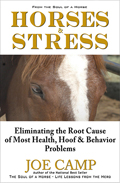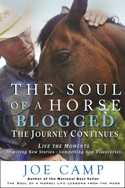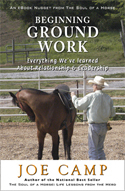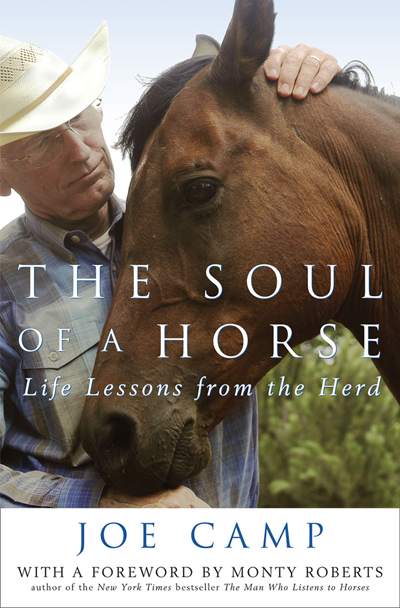By Joe Camp
If for some reason a plague wiped out the tiger in India and the species was re-introduced from, say, wild animal park inventory that had originally come from India would those tigers be considered native, indigenous?
Or feral?
Absolutely the former.
So I was astonished to learn that we were at risk of losing America’s wild horses.
How could that be?
These horses are not only a living laboratory, as a group they are a legendary icon of the American west; sentient beings that are part of our national soul. And absolutely an indigenous native species.
But the wild horse is also at the very heart of a range war with his demise as the ultimate goal. It all has to do with control of public lands across the western states. The BLM and the National Forest Service administer the 55 million acres that have been designated by law to be devoted principally to the welfare of wild horses and burros. According to Craig Downer, Ph.D. in Wildlife Ecology, these two government agencies disregarded the law and reduced that 55 million acres by approximately 36% and then leased more than 95% of that to cattle and sheep ranchers.
Making matters worse, these ranchers convinced the government to allow them to hunt and eliminate the cougar and the wolf because these two predators were killing and eating their cattle and sheep. The cougar and the wolf, like the wild horse, are historically indigenous species that are supposed to be living under the protection of the government on federal lands. The cougar and the wolf are also the natural predators of the wild horse, so without these predators in place, the herds multiply much faster than they would otherwise. Multiply much faster into a world where their forage and water is being consumed by cattle and sheep that effectively outnumber them by more than 150 to one. On land that by law is to be devoted principally to the welfare of wild horses and burros.
So rather than removing the cattle and sheep which would allow the horse to once again be the principle presence on the land and allow the cougar and wolf to flourish and allow natural balance to return, the federal government has stated to the media that the land will not support the number of wild horses and burros living on it so their numbers must be reduced. At this writing more than 33,000 mustangs have been captured and put in holding pens around the country. Not because the land will not support 60,000 horses but because it will not support that many horses plus at least a million for-profit cattle and sheep.
There’s more.
The ranchers were not satisfied with being able to lease the land for well under the market value of comparable privately held land. Nor were they satisfied with being able to hunt the natural predators of the horse. They wanted the wild horses off the land entirely. Many of these ranchers were actively attempting to get the 1971 law repealed by trying to convince the government, the media, and the lay public that the horses don’t belong on these lands because they are not native. Not indigenous. The federal government is only obligated to protect native wildlife. Their claim was that the mustang is merely feral. Domesticated horses that had escaped from the Spanish, the Indians, and the cavalry. Feral like the cats who leave home to live in the back alleys of New York.
Their claim simply ignores the historic and scientific truth in pursuit of financial gain.
And the clear scientific truth is that the wild horse is as native to North America as the Bengal tiger is to India or the lion is to Africa. The wild horse was born here in the region that was to be-come Idaho, Utah and Wyoming and fully evolved over a period of 52 million years. Approximately 7500 years ago an unknown cataclysm apparently wiped out the horse in North America along with numerous other species including the saber-toothed tiger. But not before the horse had migrated across the Bering Strait Land Bridge and spread to the rest of the world. Then in the early sixteenth century the horse was re-introduced to his homeland by the Spanish Conquistadors.
He became what is scientifically termed reintroduced native wildlife.
Rachel Fazio, a lawyer for Defense of Animals and other plaintiffs, told a 9th Circuit appellate panel in San Francisco earlier this year that the horses are “an integral part of the environment,” adding, “as much as the BLM would like to see them as not, they are actually a native species. They are tied to this land. There would not be a horse but for North America. Every single evolutionary iteration of the horse is found here and only here.”
As mentioned, if for some reason a plague wiped out the tiger in India and the species was re-introduced from, say, wild animal park inventory that had originally come from India would those tigers be considered native, indigenous? Or feral? Absolutely the former.
Remains of the earliest animal anywhere in the world to bear recognizably horse-like anatomy were found in the Idaho/Utah/Wyoming area dating 52 million years ago.
Three-and-a-half million years ago the now famous fossils found near Hageman, Idaho represent the oldest remains of the fully evolved genus Equus, roughly the size and weight of today’s Arabian horse. At this time the horse had not yet migrated across the Bering Strait Bridge.
Bones found in South America from horses that had migrated from North America dated one million years ago appear indistinguishable from Equus Caballus (the modern day domestic horse).
The studies of DNA sequences taken from long bone remains of the horses found preserved in the Alaskan permafrost deposits dating 12,000 to 28,000 years ago differ by as little as 1.2% from modern counterparts.
When the Spanish brought the horse to America they were bringing him home. Back to his native land. Wearing the same genetics, the same DNA sequencing he was wearing when he left and when those left behind were wiped out.
Some wildlife groups consider the bighorn sheep and the American bison “native” to North America. However, both species actually evolved in Asia and came into North America via the Bering Strait Land Bridge. The horse, equus caballus, conversely, evolved exclusively in North America and crossed the Bering Strait bridge into Siberia, traveling in the other direction. Equus caballus was fully evolved on the North American continent and was migrating west well before the cataclysm of 10,000 years ago.
So conversation that leads anyone to believe that the wild horse is anything other than “reintroduced native wildlife” is folly. Or worse yet malevolent.
As I write this the 35,000+ wild mustangs residing in government holding pens and facilities around the country amount to more than half of all the remaining wild mustangs in existence. And those remaining in the wild are living below viable levels. Which simply put means below the number that must be available for breeding to keep the horse from not being forced into incest for the species to attempt to survive.
All because of those cattle and sheep. Illegal cattle and sheep. To allow all this to happen someone had to knowingly break the 1971 law.
These discoveries astounded me. And made me sad.
Made sadder when I learned that the Government Accountability Office had recommended death for the wild mustangs in government custody because it was costing too much to feed and care for them.
That Oxford English Dictionary definition of domestication is: To civilize.
OED’s assumption of course was that humans would be doing the civilizing.
Maybe humans are the ones needing it.
The entire story of our journey with horses (at least through early 2014) is told in the two books that follow: the national best seller The Soul of a Horse – Life Lessons from the Herd and its sequel Born Wild – The Soul of a Horse.
And what a story it is as two novices without a clue stumble and bumble their way through the learning process so that hopefully you won’t have to. If you haven’t read both of these books already please do because with that reading, I believe, will come not just the knowledge of discovery but the passion and the excitement to cause you to commit to your journey with horses, to do for the horse without waiver so that your relationship and experience will be with loving, happy and healthy horses who are willing partners and who never stop trying for you. Horses like ours.
The highly acclaimed best selling sequel to the National Best Seller
The Soul of a Horse – Life Lessons from the Herd
#1 Amazon Best Seller
#1 Amazon “Hot New Releases”
Amazon & Kindle
B&N
Order Personally Inscribed Copies of Born Wild
Order Both The Soul of a Horse & Born Wild – Save 20%
Both Personally Inscribed
Please list the names for each inscription in the “instructions to Seller” field as you check out!
Read More About Born Wild
Read More About The Soul of a Horse
Watch The Soul of a Horse Trailer
Watch the Born Wild Trailer
But first read the National Best Seller that started it all
Now in it’s 17th printing:
































